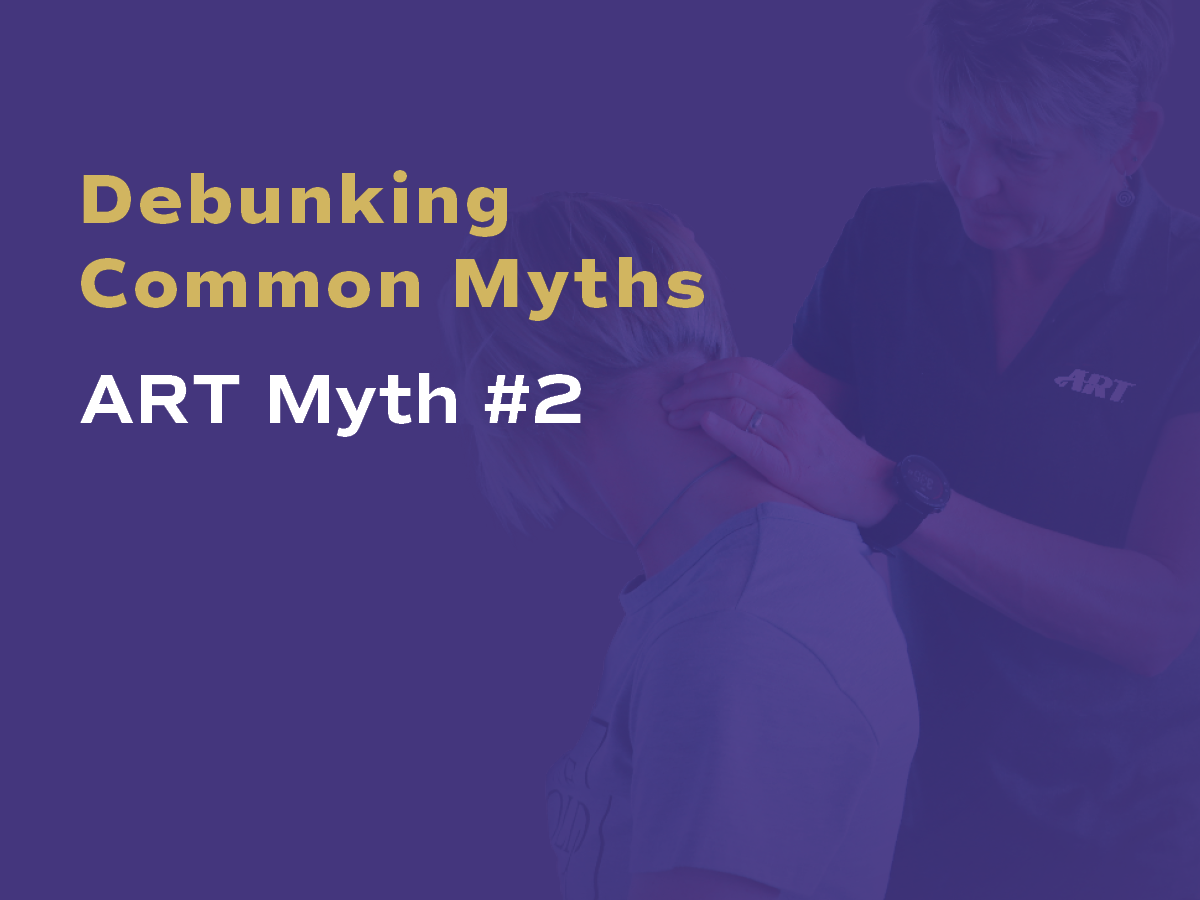Debunking Common Myths: ART Treatment + Pin and Stretch
A long-time Active Release Techniques® (ART®) Elite Provider™ Dr. Lezlie Maloy, D.C. debunks the common question, “isn’t ART just pin-and-stretch?”
So how are they different?
Health care providers often ask me how pin-and-stretch and ART treatment differ and are unsure if ART treatment is something they want to invest their time in learning.
My first question to them is, “how many treatments does it take for you to resolve an injury with pin and stretch?”
Responses are mixed, but answers are rarely, if ever, the confident answer of three to five visits that I can give with ART treatment.
Other providers are surprised by this answer and wonder how I can be so confident. Do I really “fix” everyone in three to five visits?
No, but within that time, if a patient is not dramatically improved or resolved, I know that issue is not within or isolated to the soft tissue. Utilizing ART treatment allows me to know if I need to proceed with imaging, a referral, or re-evaluate my diagnosis.
My confidence comes from the strategic game plan that ART treatment provides me: a diagnostic algorithm, biomechanical testing, active palpation, and use of protocols to decrease symptoms and increase function quickly, often on the same visit.
Is taking an ART seminar worth it?
ART treatment is a non-invasive system that treats soft-tissue and nerve dysfunction at the source. This hands-on treatment uses provider touch and patient movement to pinpoint and treat the origin of the affected area.
But truthfully, it is so much more.
With ART treatment, errant movement can be felt within and between tissues. It provides an in-depth understanding of anatomy and how each structure moves in relation to surrounding structures.
Providers begin by learning protocols for individual muscles/structures, but with time and additional levels of certification, an ART Certified Provider™ begins to dig much deeper (pun intended) into the relationships of tissues.
And not just muscles. I’m talking tendons, ligaments, and nerves too.
Tell me, with pin-and-stretch, can you evaluate the movement of the median nerve at the pronator teres?
How about scar tissue buildup within the medial and lateral ankle ligaments?
Or a small structure like the annular ligament?
Beyond palpation and learning to feel what’s going on under the skin, a key difference between ART treatment and pin-and-stretch is the approach to actually treating soft tissue. With ART treatment, you take an intentional amount of depth on a tissue while still allowing for movement so that you can feel what is, or more importantly, is not happening.
But how do you know where to apply treatment?
The ART Diagnostic Algorithm allows providers to find and address the root cause of pain, not just where it presents itself through symptomatic movement.
Directing use of ART protocols to the actual area of dysfunction rather than the site where symptoms are present, reduces treatment time and improves efficiency.
The bottom line
While ART treatment may look like pin and stretch to the uninformed observer, an ART Certified Provider has a deep understanding of human anatomy, movement, and tissue feel that they must apply in an ART treatment session.
The proof really does lie in the efficiency of ART treatment in quickly resolving conditions.
Based on year-over-year data from ART’s corporate wellness programs, more than 80% of soft-tissue dysfunction is resolved in five or fewer 15-minute treatment sessions, with that number sitting right around 89% today.
If those numbers aren’t convincing enough for you, I challenge you to see for yourself.
About the Author
Dr. Lezlie Maloy, D.C.
Dr. Maloy has been an ART Certified Provider since 2008, an ART Instructor since 2012, and an Elite Provider since 2014. She owns Spring Valley Spine and SportsCare™ in Addison, Texas. In her spare time, she attempts to control the chaos of her children, Brooks and Sam, and enjoys watching Sooner Sports with her husband and boys.
